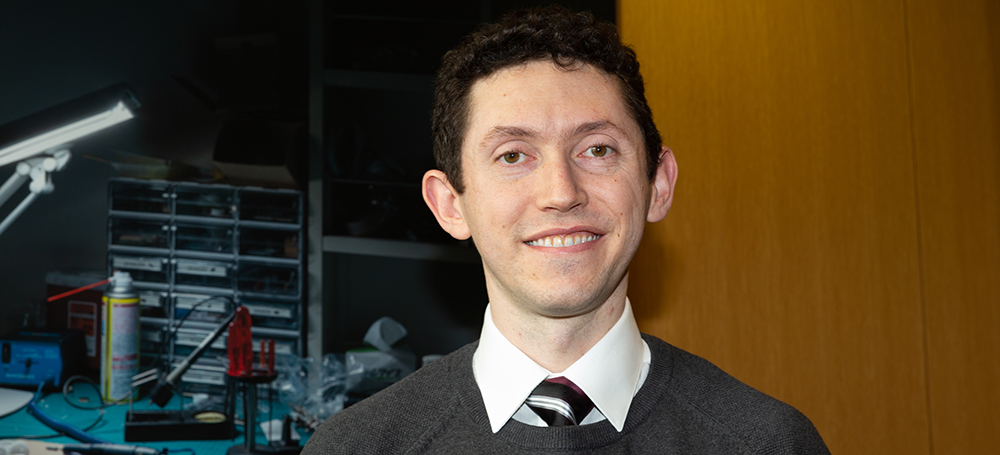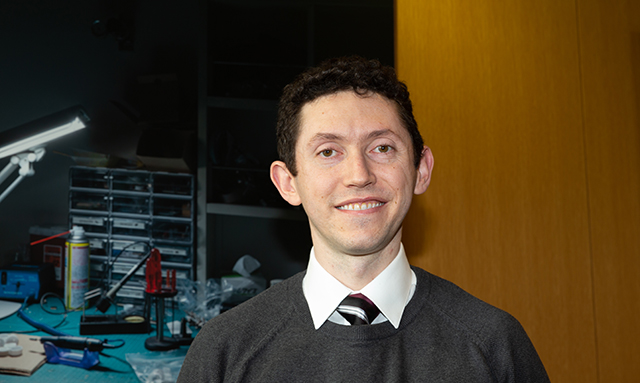Making sense of how brains make sense of the world
Apr. 13, 2020
Amanda Alvarez


To become a scientist, you have to learn a lot from those who came before, but to make new discoveries, you also have to go beyond the accepted wisdom. “You shouldn't be bound by received knowledge,” says L. Ian Schmitt. “You have to keep your eyes open.” For him, this boils down to a quote from science fiction author Frank Herbert: “It is possible to know so much about a subject that you become totally ignorant.” As the newest team leader at the RIKEN Center for Brain Science, Schmitt is committed to developing a deep knowledge of how the brain works without losing his essential curiosity or forgetting the purpose of research, to benefit people.
Schmitt was confident he wanted to be a neuroscientist since he was a teenager. Inspired by the Borg of Star Trek, he aspired to create read-write capabilities for the brain. This ambition was just the ticket to take Schmitt to the Massachusetts Institute of Technology, where he completed both his undergraduate and later postdoctoral fellowship. Still, he did have his doubts about pursuing neuroscience research: “I was fascinated by the brain's complexity, but I almost changed to bioengineering, because I thought the brain is intractable and I would have a better chance of helping people,” Schmitt recalls. “But in the end, I decided there was a way to do this in neuroscience, by understanding how interacting systems in the brain can get disrupted.”
This goal is reflected in the name of Schmitt's lab, Distributed Cognitive Processing. “Brain regions are modular and independent but they interact on multiple scales to produce cognitive functions like language or memory. It's parallel processing, somewhat the equivalent of multitasking,” says Schmitt. “The brain is a general processing system in a way that artificial intelligence is not, and can seamlessly switch between functions using very little energy to do so.” But disorders of these cognitive functions are common, with few treatments available. Complicated disorders like schizophrenia, autism and dementia happen when parts of the brain fail to work as one. “In some studies of mouse models of autism, for example, the underlying issue is that two distinct brain systems are not connected, so they do not work together effectively” he explains. “If we can understand the interactions between these systems in a mouse, there is hope of correcting related problems in humans, because the brain structures are highly similar.”
Schmitt's particular interest is the thalamocortical circuit, a core processing system in mammals. “It's a key part of what makes us special, and we do have some understanding of how the system functions: the thalamus brings information from the senses to be processed in the cortex. But how this circuit operates at higher levels above simple sensory input, that's unknown. Is information maintained over time? Is it just pushed and processed in a feedforward manner? Many things are not known about the system, and this is the focus of my work.”

L. Ian Schmitt keeps a compass on his desk.
“It is a very human object:
it conveys meaning but you have to interpret it.”
The thalamocortical circuit is likely essential for our ability to understand and preserve a perception of the present environment. “If you lose recent sensory input, the world becomes fragmented,” says Schmitt, pointing to conditions like autism or schizophrenia, where sensations, thoughts, and decisions are disorganized. Schmitt thinks there are now alternatives to studying these processes, beyond looking at human patients or non-human primates. “Mice are often not thought of as intelligent, but they can be trained to do complex cognitive tasks,” says Schmitt. In the lab, he has created directed attention experiments for mice, where they have to focus on a visual target and ignore a sound, for example. “With mouse behavior plus the powerful genetic engineering toolset, we can get results quite rapidly which can lead us to a deeper understanding. My future work will use these kinds of approaches to look at how decisions are made from complex situations with noisy inputs that are integrated over time.”
And Schmitt's youthful motivator, the read-write brain, is also within reach. “We're getting there. Now we can record from 100,000 neurons and manipulate them optogenetically [with light stimulation]. That is reading and writing.” Though scientists are now capable of inserting false memories into rodent brains using such technology, Schmitt maintains that it should never be used for nefarious purposes. “What keeps us honest is focusing on helping people, solving disorders. We just have to make sure our goals are directed towards the benefit of society.”



